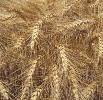May 12, 2010

Behind the limelight of early corn planting in Illinois this spring stands a less-than-favorable wheat crop.
With 69% of the state's wheat crop rated fair or worse, the 2010 crop is one of the lowest-rated crops in recent memory. It also occupies the smallest acreage since records began in 1866. It's time for growers to determine if their wheat crop is worth keeping.
"There are some good wheat fields in Illinois, but not very many," says Emerson Nafziger, University of Illinois Extension agronomist. "If your plan is to let a marginal wheat crop go to maturity and then to plant double-crop soybeans, you need to consider the risk of trading good row-crop planting conditions now for very late planting of a second crop under uncertain conditions in mid- to late June."
According to Nafziger, wheat prices are responding to the good wheat crop in other parts of the world and have not been sending a strong signal to keep marginal fields of soft red winter wheat.
"The key to assessing yield potential now is to count the number of heads per square foot," he adds. "We normally estimate that one head per square foot will produce one bushel per acre. Thin stands tend to produce larger heads, but even at that, many existing stands are not expected to produce more than 30 to 40 bushels per acre. Whether or not that's worth keeping depends on an individual's approach to risk, and the degree of optimism about the chances for good double-crop yields in southern Illinois."
Actively growing wheat should be relatively easy to kill with herbicides at this growth state. Nafziger advises growers to watch closely for insect larvae such as armyworms that can hatch on wheat plants and then move over to a newly-planted crop once the wheat starts to die.
Allelopathy, plant injury caused by chemical substances released as crop residue breaks down, is a concern when a growing crop is killed and replaced immediately by another crop.
"Even though we often can't see or measure an allelopathic effect and crops planted in this way typically do very well, it makes sense to move the residue off the planted row so that anything leaching out of it doesn't reach the newly planted seed or seedling," he notes. "However, it may be difficult for trash movers to push aside all of the crop residue, especially if the wheat crop roots haven't died yet."
The goal to place and cover seed in the soil without having crop residue pushed into the seed furrow might be achieved by using tillage if no-till doesn't work. In some cases, Nafziger says it may be more beneficial to let the killed crop dry up for a few more days if that's the only way to get good seed placement of the replacement crop.
For more information, read The Bulletin online at ipm.illinois.edu/bulletin.
You May Also Like




